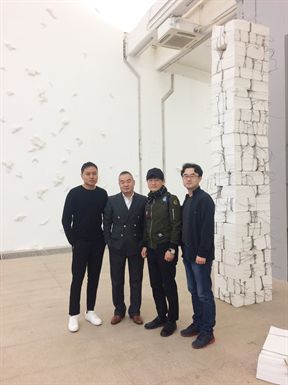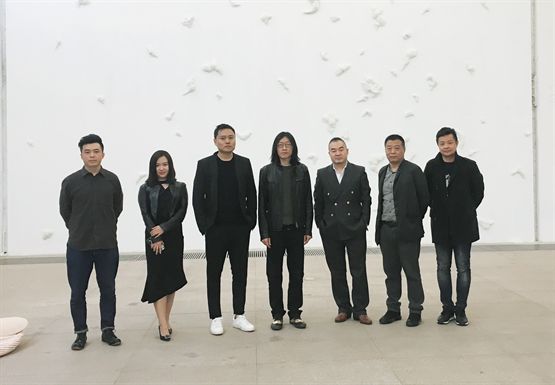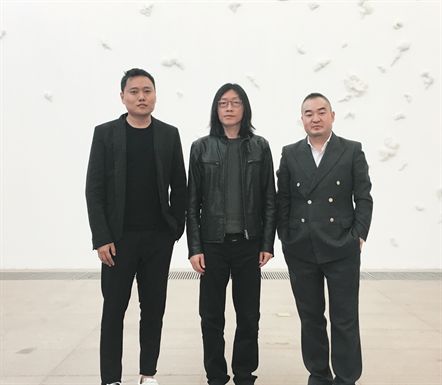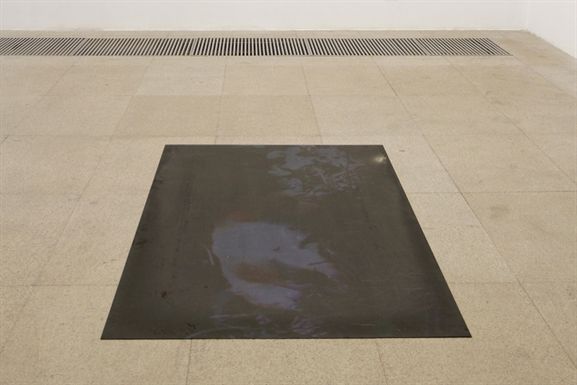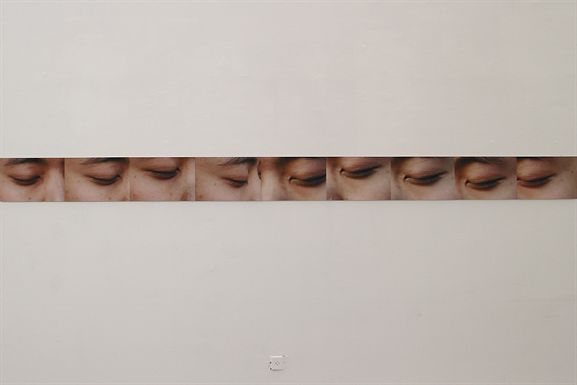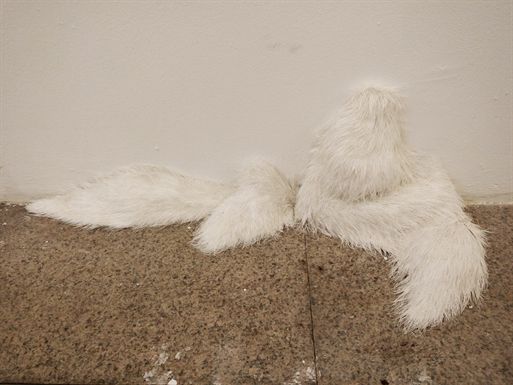Oct 16 - Nov 13, 2016
Press Release
Curator Article
Picture of the White Pond
Zhuzhu
Since the making of the Tibetan Books in 2012, Wu Wei became interested in the formal translation between text, animals and primitive power, in which books are gradually simplified tostacks of paper. Similar to Felix Gonzalez-Torres’ humble composition, the animals are made of ripped pages, and once colored to mimic fur and skin, theyappear indistinctly, rendering an “intangible enigma”. In the course of eliminating the storyline and figures, the artist aims to restore the work of art to an instinctive experience of “visualizing the psyche”.People(2014) furthermore bears witness to the progression in the evolution of his artistic language, while the direction he has chosen in making sculptures began to steer toward “building an intuitive space between materiality and spirituality.”
Picture of the White Pond as an exhibition framework was conceived in 2015. Inspired by a short text in YunjiQiqian, Wu Wei attempts to structure his reading, imagination and thought process around the exhibition space. The White Pond was a sacred animal from the Huangdi era, and the Picture of the White Pond is a compilation of its worldly sayings. The original text on the discovery of this animal reads, “The emperor went hunting, reaching as far as the sea in the East and climbing the HengMountain. By the seashore, he captures the White Pond, an animal that peaks and conveys the spirit of all things. The emperor inquires about all the ghosts and spirits in the world to the White Pond, and finds out that things having been touched by the spirit and what have transformed by traveling spirits amounts to one thousand five hundred and twenty types. The White Pond described all these types to the emperor, which was ordered to be recorded to show the rest of the world.” Since the Han dynasty, the story of the White Pond was also documented in various classical texts.For example, in the “Animals” volume of YuanjianLeihan, an annotation to the Classics of Mountains and Sea, “The ruling emperor is righteous, his governance will reach far and beyond” (unfound documentation in the current version of Classics of Mountains and Seas). Based on which, the following dynasties reinforced its symbolism of auspiciousness, considering it to have the power to expel demons and evil spirits. However, there is very little description of its appearance. “Inhabiting the Kunlun Mountain, cover in white fur, and has wings” are apparently additional portrayals written by later generations.
“The White Pond embodies properties of bothsacred animals and books, they consist of thetwo central elements of sculpture (the forms of animal and features of a book) as the compositional components of Picture of White Pond. Since the books have been lost and the image of the White Pond remains uncertain,the framework allows for a greater possibility in composition and allegorical meaning.” What Wu Wei retrieves from the ancient discourse is a thread that ignites certain interests, with which to weave together the course of separation between our physical body and ourspirit. The three sets of works present a possible progressive relation. Moreover, the Picture of White Pond as the central metaphor is placed in the middle of the ever changing fate and the progression of time, assuming three different kinds of forms, it is casted by the artist’s subjective gaze projected through photographs, videos and sculptures, tying the exhibition into an allegory of reading/being read.
The first set of works is a stack of papers studded with glass balls, like the eyes of an animal portrayed by its ancient form in Picture of White Pond, the secrets of all the ghosts and monsters in the world are tucked between the papers and kept, awaiting for our interpretation. On a photograph, the artist’s eyes are shut, he refused to look, or does not have the means to do so. The second set of works “Undisclosed Picture of White Pond”, where a stack of paper is wrapped tight by metal wire, suggesting the isolating and oppressive confines of contemporary society on tradition. As a compromise, the ghosts recorded in Picture of White Pond are dispersed throughout the space in fragments. A finger embroidered in layers saps on the floor, symbolizing the helplessness of an individual in his reality. In the third set of works, the White Pond under the spotlight reveals its feeble animal form, having lost its spirit,it does share any difference with the ghosts and monsters it describes. A video next to it plays a scene of a dead squirrel hovered over by flies, suggesting the White Pond’s own ultimate fate of encountering death.
“Exploring power and experience provoked by the individual’s emotions, by which to return to the primitive experience and spirituality of the Eastern tradition” is the self-revelation that Wu Wei attempts to attain through revisiting ancient methods in today’s deconstructive discourse of the post-modern. It is also where his self-conscience lies, rather than being immersed by meaningless fragments, he yearns for the discovery of a universal view that considers the myriad things as one entity, to the very least, his Picture of White Pond touches on the pain and sorrow related to such discovery.
October, 2016

